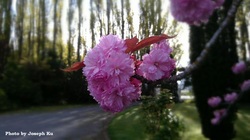Summertime Tree Care (NZ)
Extended dry periods, sudden heavy rain, strong winds, and high humidity all place added pressure on trees
When you need a professional arborist the name to remember is Beaver Tree Service – we are here to help.
Why Regular Tree Care and Safe Tree Removal Matter More Than You Think
After recent high winds, our qualified arborists offer expert tree care, storm damage repairs, and tree removal services to keep your property safe and beautiful.
When Trees Go Rogue: Spotting Trouble Before It Falls on Your Roof
Most of the time, trees are the quiet heroes of our gardens - providing shade, shelter for the tūī, fruit in autumn. But left unchecked, even the loveliest oak, pōhutukawa, or walnut can turn from garden treasure to potential hazard.
Beaver Tree Service Christchurch: Your Local Arborist Team
When it comes to tree care and maintenance in Christchurch, you want a team that knows the land, the climate, and the quirks of Canterbury gardens.
Spring Tree Care Tips: Expert Arborists’ Guide to Tree Maintenance
Spring into action!
Tree Care Tips
We’ve compiled these articles so that you too, can benefit from the experience and knowledge that our arborists and skilled tree techs have. We are committed to our customers and desire that you enjoy and value your tree’s as much as we do.
Giving back to the community in various ways is yet another one of our key focuses.
 Spring is the perfect time to prune your ornamental trees, the sap has stopped rising, most trees are finishing flowering & leaves have developed. Trees are actively growing so any cuts are going to heal well. Trees are less prone to disease or infections due to the above reasons when pruned at this time of year. So for healthier trees & more sun during those evening BBQ’s & entertaining prune at the right time. If you need help or would prefer an expert arborist to do this for you please give us a CALL NOW on 344-6223 for your FREE Spring Tree Appraisal.
Spring is the perfect time to prune your ornamental trees, the sap has stopped rising, most trees are finishing flowering & leaves have developed. Trees are actively growing so any cuts are going to heal well. Trees are less prone to disease or infections due to the above reasons when pruned at this time of year. So for healthier trees & more sun during those evening BBQ’s & entertaining prune at the right time. If you need help or would prefer an expert arborist to do this for you please give us a CALL NOW on 344-6223 for your FREE Spring Tree Appraisal.